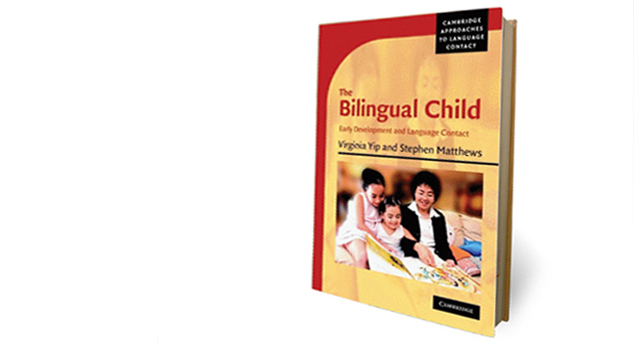For Dr Stephen Matthews, and his wife, the birth of their children proved a double blessing. For, along with the usual joys of parenthood, these two linguists were inspired by their newborns to take their research in a new direction.
Dr Matthews, Associate Professor in HKU's School of Humanities, and his wife Professor Virginia Yip, of the Chinese University of Hong Kong (CUHK) – who are joint directors of the newly-established Childhood Bilingualism Research Centre between HKU and CUHK – have now gathered that groundbreaking research into an award-winning book: The Bilingual Child: Early Development and Language Contact (published by Cambridge University Press).
The book, which recently won the prestigious Leonard Bloomfield Book Award, presents new findings on how children acquire two languages from birth and throws fresh light on the acquisition of English and Cantonese in childhood – a hitherto under-researched area.
"It took us roughly ten years to write, from research to publication, and we started with our own son and two daughters, and also looked for children in a similar situation, by which we mean one parent, one language," explains Dr Matthews.
"With our own children we looked at them from age one to five. Back in 1993-94 almost nothing was known about bilingual children acquiring English and Cantonese together. Most of the research came from Europe, or Canada, and involved European languages. That research seems to show that there are no particular developmental issues, that there is no interaction between the European languages.
"But we wondered whether we would find the same thing with languages as different as English and Cantonese, or whether we would see the interactions."
What they found took most linguists by surprise in the field. "If you listen to our children's English in the early years you can hear surprising features that are like Cantonese in their grammar. In English, they will ask 'you say what?' And we can trace that to Cantonese, it is a straight-forward example of transferring Cantonese grammar to English." This had never been recorded systematically before in Hong Kong bilingual children.
"We argue in the book that our children go through a stage in which they treat English the same way as Cantonese does with regard to questions – they say 'I know it's where', instead of 'I know where it is'. We have one chapter where we argue that the child's Cantonese is also affected by their English, but that's more difficult to see."
The couple is now convinced that parents who delay exposing their children to both languages fearing it will be too much for them to absorb, are labouring under a misapprehension. "We think it's better for them to learn both in tandem," says Dr Matthews. "It's a very complicated argument because early on the children already demonstrate the ability to differentiate the two languages and by age four or five they have figured it out. We think it's a good thing for children to be exposed to both languages from birth, there's the obvious practical advantage, but there are some deeper and more obvious benefits too."
In fact, research shows that bilingual children have cognitive advantages over their monolingual peers. Indeed, Professor Yip stresses that they are more creative and better decision makers.
"They are better at problem-solving and thinking outside the box. Their minds are naturally more flexible," she says. 
The Bilingual Child: Early Development and
Language Contact by Virginia Yip and
Stephen Matthews, published by Cambridge University Press. |
